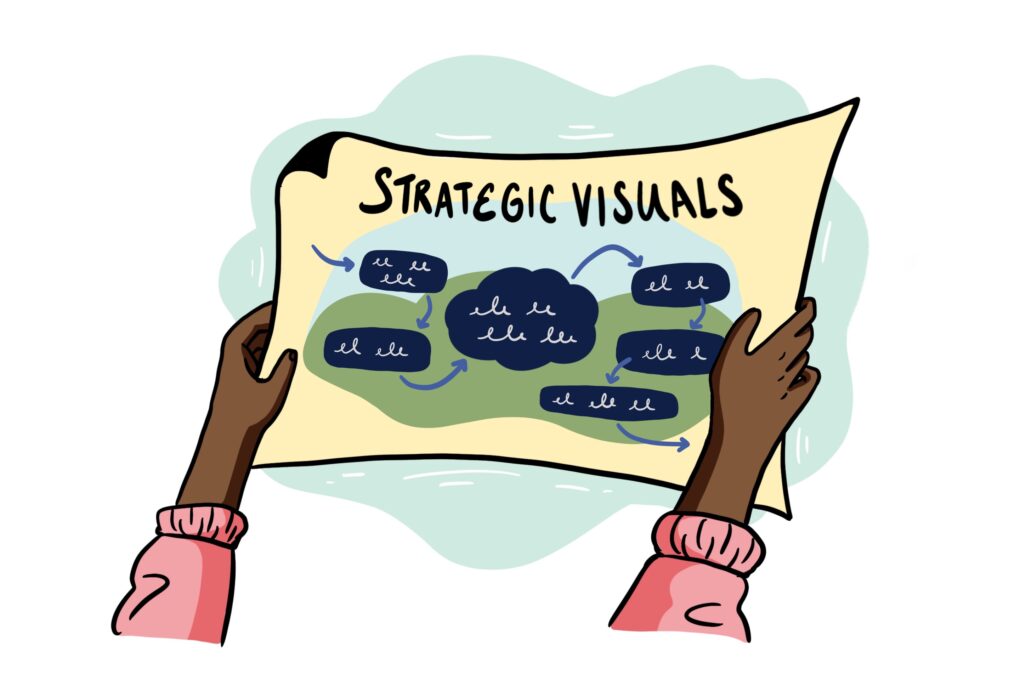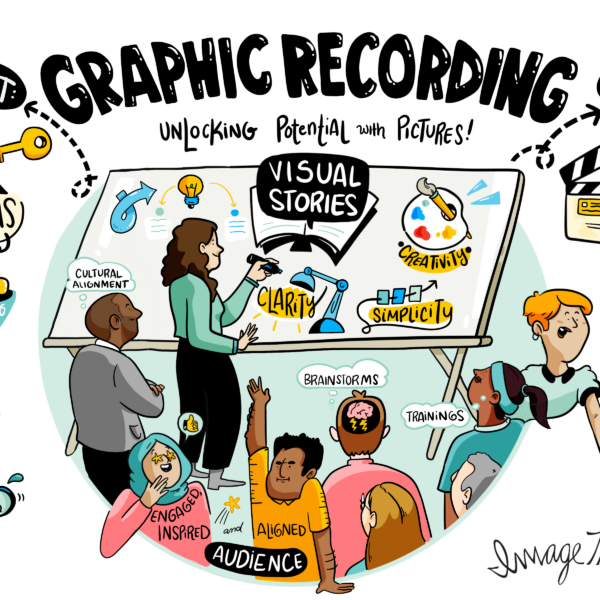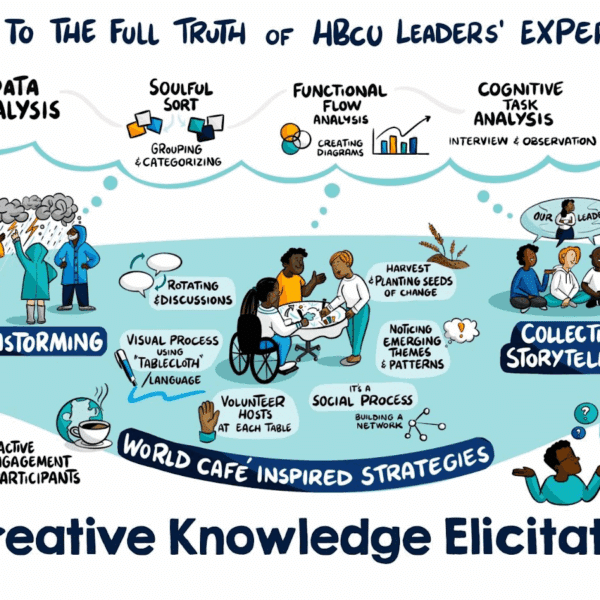Right now, hundreds and thousands of organizations all over the world are rolling out or implementing a strategic plan. 90% of them will fail. More often than not, it will be at the hands of the same culprit: ineffective strategy implementation.
Implementing a strategic plan can be daunting for leaders and teams alike. Whether you’re launching a new initiative, aligning teams, or explaining a complex product offering, the path toward clear communication and strategic success can quickly become clouded by challenges. Happily, there’s a visual remedy to navigate the complexities and challenges associated with strategy implementation.
Strategic visualization is a gamechanger for organizations, and actively transforms the way they communicate and implement strategies. If you’re experiencing one of the six signs below, you could largely benefit from incorporating strategic visuals into your workflow.
Sign 1: Struggle to understand complex strategies
Complexity is a double-edged sword. While it provides the necessary constraints that accelerate idea generation, it can create challenges in a strategy that can wear on even the most seasoned teams. Complexity can lead to misunderstandings, misaligned goals, and eventually, a breakdown in execution. Clear communication is crucial for effective strategy implementation, yet conveying elaborate ideas succinctly is easier said than done.
Strategic visuals simplify complex strategies by breaking down key pieces into digestible, visual components. Leveraging visuals to communicate the intricate parts of your strategy allows your team to grasp core concepts more readily. In turn, strategic visuals lead to better understanding and ultimately, execution.

Sign 2: Lack of team or departmental alignment
Misalignment among teams and departments creates inefficiencies, conflicts, and a lack of cohesion within the organization. What’s worse – many leaders are often unaware of how aligned – or misaligned – their organization is. When different parts of your organization are not working toward a unified vision, it becomes difficult to achieve company-wide objectives. A study from Researchscape supports this point, with nearly half (47%) of its respondents reporting that projects fail to meet their objectives as a result of alignment issues.
Visualization is a universal language, and can provide a common ground for an entire organization. A clear, unified vision that’s visualized can help align teams and departments by defining roles and action items. As a result, strategic visuals ensure everyone is on the same page and working toward the same goals.
Sign 3: Low engagement and motivation
Lack of engagement and motivation can have a detrimental impact on teams, the larger organization, and their bottom line. Employees that are not fully engaged create a ripple effect throughout the workplace that can cause team dynamics and morale to erode, innovation to stagnate, and the quality of work to decline. Not only is the cocktail of low engagement and motivation bad for business, but it’s also a death sentence for successful strategy implementation.
Strategic visuals have the power to boost engagement and motivation in the workplace by making goals and processes more engaging and relatable. Therefore, visual aids can capture and keep attention, make abstract ideas more concrete, and help motivate your team by showing where they – and their tasks – fit into the bigger picture.
Lead your strategy to success
Sign 4: Can’t explain or sell complex products or services
Communicating the value of a complex product or service offering to potential clients can be challenging. When your audience struggles to understand what you’re offering, it becomes difficult to close deals and drive sales.
Whether through a strategic visual or live whiteboarding session, leveraging visuals can enhance sales pitches by building client engagement and understanding. Visualization helps explain products or services in a way that’s clear, compelling, and resonate. Having a visual asset in your sale’s team’s arsenal gives them a tool to speak to directly in client interactions. This is especially valuable in conveying the value of your products or services.
Sign 5: Resistance to change and new processes
Businesses must be nimble to their ever-changing landscape. However, resistance to change can be a common occurrence within organizations – making change difficult to achieve. People tend to be “stuck in their ways,” or more comfortable with what is familiar to them. Altering a process, system, team, or direction can lead to delays and reduced effectiveness in implementing changes.
Strategic visuals facilitate smoother transitions by illustrating change, the vision behind the change, and its projected benefits with clarity. By providing a visual roadmap, teams find it easier to adapt to new ways of working. Thus, strategic visuals help eradicate any resistance to change.

Sign 6: No clarified, long-term vision
Without a shared, long-term vision, members of the organization can feel like the direction forward is unclear. They march along to a beat, but don’t know how their work ties into the bigger picture. If your team doesn’t know where they’re headed, it becomes hard for them to stay inspired by or aligned with long-term goals.
Leveraging strategic visuals provides a number of benefits, but most importantly, in doing so, you effectively communicate and reinforce your organization’s long-term vision and goals. With a reminder of where the organization is headed and why, your team remains focused, and the flame within each member continues to roar.
Spot the signs, see the solution
To recap, here are the six signs that indicate the need for a strategic visual in your organization:
- Your team struggles with understanding complex strategies.
- Misalignment among teams and departments.
- Low engagement and motivation.
- Difficulty in explaining and selling complex products and services.
- Resistance to change and new processes.
- Lack of a clear, long-term vision.

Recognize any of these signs within your organization? It might be time to integrate strategic visuals into your communication and strategy implementation methods. Get in touch with us today to learn how an impactful strategic visual can transform the way your business operates. By leveraging the power of visual communication, you not only enhance clarity and alignment, you drive long-lasting engagement within your team.




